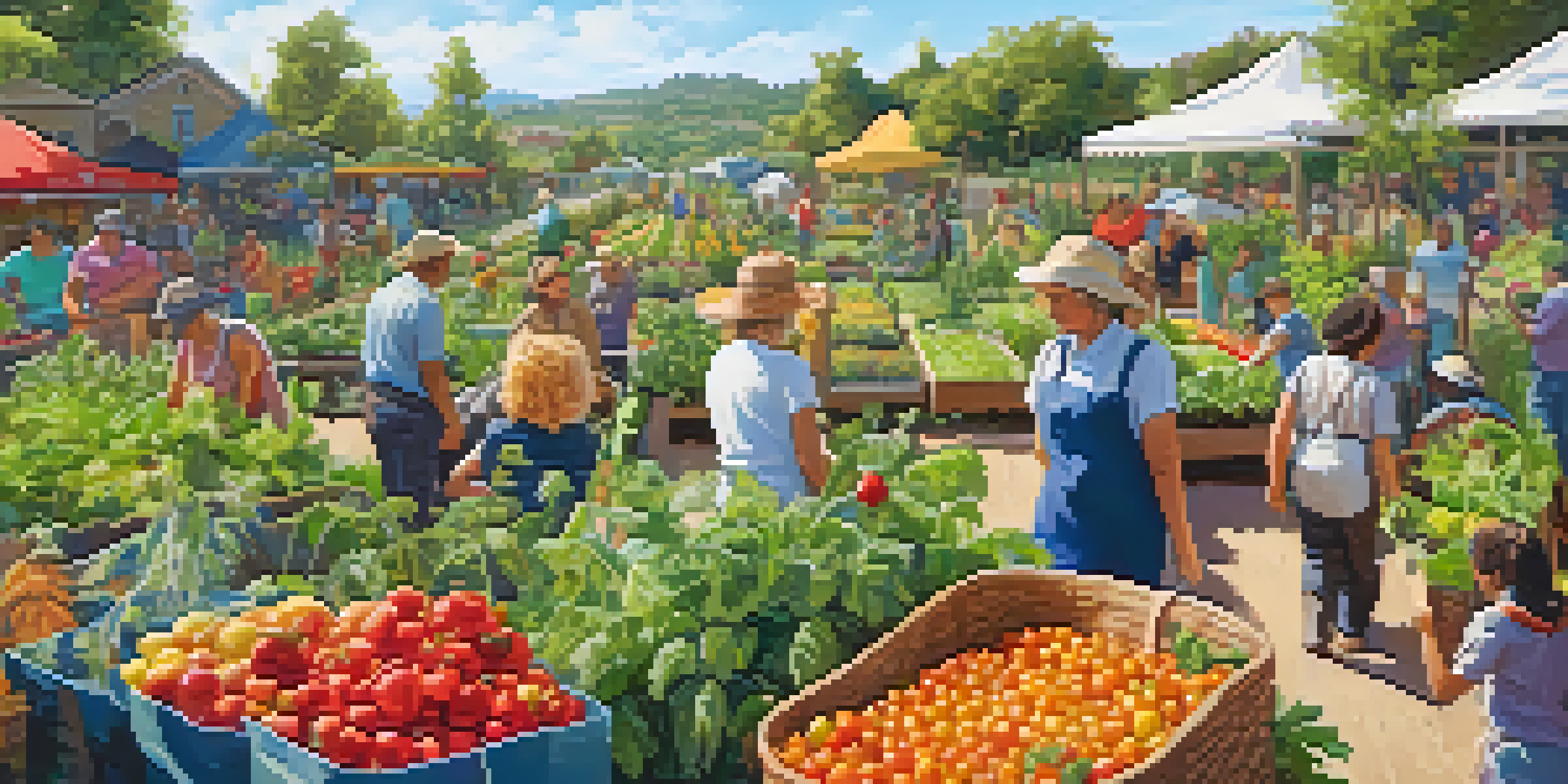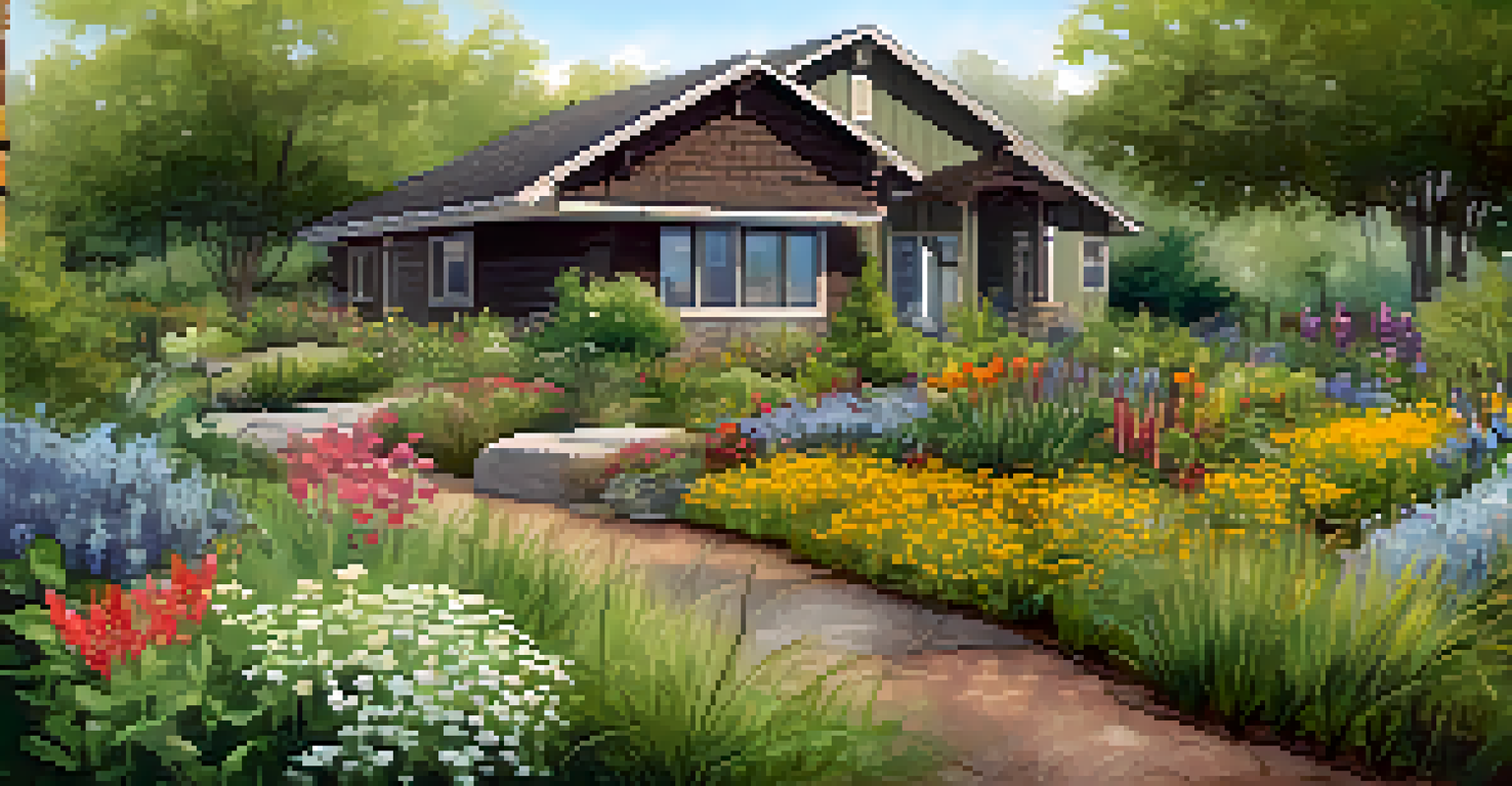Eco-Friendly Outdoor Spaces: Sustainable Design Trends

Understanding Sustainable Design in Outdoor Spaces
Sustainable design focuses on creating spaces that are eco-friendly and resource-efficient. It’s about harmonizing nature with human activities, ensuring that outdoor areas work with the environment rather than against it. For instance, using native plants in gardens not only reduces water usage but also supports local wildlife.
The greatest threat to our planet is the belief that someone else will save it.
This approach encourages the use of materials and practices that minimize environmental impact. By selecting recycled materials or sustainably sourced wood, designers can create beautiful spaces that also contribute to conservation efforts. Think of it like cooking with local ingredients; it’s better for you and the planet.
Ultimately, sustainable design is about balance. It invites us to consider how our outdoor spaces can benefit both people and the planet, creating a more harmonious relationship with nature. This mindset is gaining traction as more people recognize the importance of eco-friendly living.
Embracing Native Plants for Biodiversity
One of the most effective sustainable practices is incorporating native plants into outdoor designs. These plants are adapted to the local climate and soil, making them easier to maintain and less reliant on water and fertilizers. For example, planting local wildflowers can attract a variety of pollinators, enriching the ecosystem.

By choosing native species, homeowners can create vibrant, thriving gardens that require less care. This not only saves time and money but also promotes biodiversity, allowing local wildlife to flourish. Imagine your garden as a small habitat that supports bees, butterflies, and birds, all while being stunningly beautiful.
Sustainable Design Harmonizes Nature
Sustainable design focuses on creating eco-friendly outdoor spaces that benefit both people and the environment.
Moreover, native plants can contribute to the overall health of the environment. They help prevent soil erosion, improve air quality, and even capture carbon, making them a perfect choice for eco-conscious designers. This trend reflects a growing awareness of the interconnectedness of all life.
Rain Gardens: Managing Stormwater Sustainably
Rain gardens are an innovative solution for managing stormwater while enhancing outdoor spaces. These gardens are designed to collect and absorb rainwater from roofs, driveways, and sidewalks, reducing runoff and preventing flooding. They not only serve a practical purpose but also create beautiful, lush landscapes.
Nature does not hurry, yet everything is accomplished.
Incorporating a rain garden can be as simple as digging a depression and planting it with native vegetation. This design not only helps manage water but also provides a habitat for local wildlife. Picture a vibrant space filled with colorful flowers and plants that thrive in excess moisture, all while benefiting the environment.
Creating a rain garden reflects a commitment to sustainability and can even improve property value. Homeowners can feel good knowing they’re playing a part in protecting local waterways and reducing pollution. It’s a win-win for both nature and aesthetics!
Sustainable Materials: Making Eco-Friendly Choices
When it comes to designing outdoor spaces, the materials used can significantly impact the environment. Sustainable materials, such as reclaimed wood or bamboo, are excellent choices that reduce waste and environmental degradation. For instance, using reclaimed wood for decking can lend a rustic charm while minimizing the need for new resources.
Additionally, eco-friendly materials often come with lower carbon footprints. Using composite materials made from recycled plastics can offer durability and a reduced environmental impact. It’s similar to choosing a reusable water bottle over single-use plastic; small choices can lead to big changes.
Native Plants Boost Biodiversity
Incorporating native plants into gardens promotes local wildlife and requires less maintenance, creating vibrant ecosystems.
Opting for sustainable materials reflects a broader commitment to eco-conscious living. By making thoughtful choices, designers and homeowners can create inviting spaces that are not only beautiful but also beneficial for the planet. This trend is gaining momentum as more people seek out greener alternatives.
Outdoor Living Spaces: Designing for Connection
Creating outdoor living spaces is about more than aesthetics; it's about fostering connection with nature and each other. Sustainable outdoor areas often include features like patios made from permeable pavers and outdoor kitchens that encourage social interaction. Imagine gathering with friends around a fire pit surrounded by lush greenery and native plants.
These spaces are designed to be functional while promoting a sense of well-being. Incorporating natural elements like stone and wood can enhance the organic feel of the environment, blurring the lines between indoors and outdoors. Think of it as an extension of your home, where nature becomes part of your daily life.
Incorporating sustainable practices into outdoor living designs enriches the experience. It encourages mindful interactions with the environment, promoting a lifestyle that values both comfort and ecological responsibility. This trend is about creating spaces that nourish both the body and soul.
Green Roofs: Bringing Nature to Urban Spaces
Green roofs are a fantastic way to incorporate nature into urban environments. By planting vegetation on rooftops, these spaces can help reduce heat, manage stormwater, and improve air quality. Imagine walking through a bustling city and seeing lush greenery above you, transforming the skyline.
These living roofs can also provide habitats for birds and insects, enhancing urban biodiversity. Additionally, they can insulate buildings, reducing energy costs and creating a more sustainable urban environment. It’s like having a mini-ecosystem right at your fingertips!
Community Gardens Foster Connection
Community gardens encourage collaboration among neighbors while promoting sustainability and providing fresh produce.
As cities continue to grow, green roofs offer a solution to many urban challenges. They provide essential green spaces, improve aesthetics, and promote sustainability. This trend highlights the importance of integrating nature into our built environments for a healthier future.
Community Gardens: Cultivating Connection and Sustainability
Community gardens are a wonderful way to bring people together while promoting sustainable practices. These shared spaces allow neighbors to grow their own food, fostering a sense of community and environmental stewardship. Picture a vibrant garden filled with diverse crops, where people gather to harvest and share their bounty.
In addition to providing fresh produce, community gardens can serve as educational tools, teaching participants about sustainability and food systems. They encourage people to connect with their food sources and understand the importance of local ecosystems. It’s like a hands-on classroom for all ages!

Moreover, community gardens contribute to urban biodiversity and green spaces. They provide habitats for various species and help mitigate urban heat. This trend underscores the power of collaboration in creating sustainable outdoor spaces that benefit both individuals and the community as a whole.